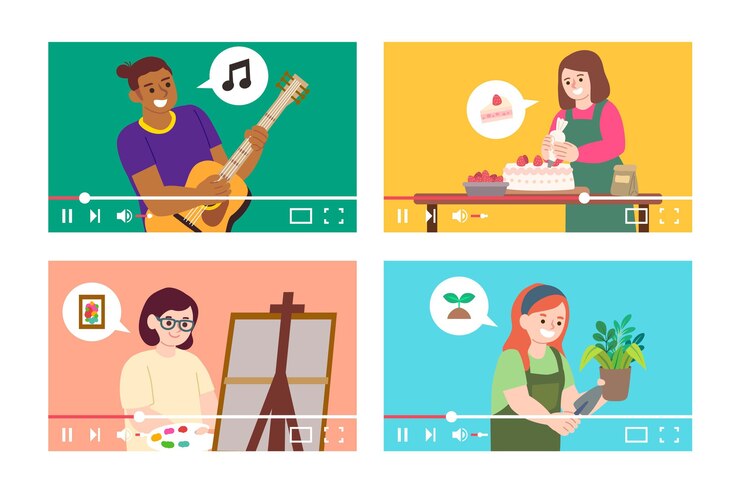
In the world of cultural storytelling, the medium through which stories are shared is as crucial as the stories themselves. From preserving ancient traditions to promoting modern cultural values, 2D animation services have emerged as a powerful tool for narrating tales that resonate across generations. The simplicity, flexibility, and creativity inherent in 2D animation styles make it an ideal choice for conveying intricate cultural narratives.
Why 2D Animation is Perfect for Cultural Storytelling
-
Visual Simplicity and Emotional Depth
2D animation captures emotions and narratives with a straightforward visual approach that doesn’t overcomplicate the storytelling. The focus remains on characters, dialogue, and the underlying cultural themes, making it relatable for a diverse audience. -
Flexibility in Style and Approach
Whether traditional hand-drawn animations or modern digital techniques, 2D animation styles provide diverse methods to represent cultural nuances. Styles like cel animation, cut-out animation, and silhouette animation are often utilized to mirror specific artistic traditions or storytelling formats native to a culture. -
Universal Appeal
The universality of 2D animation bridges linguistic and cultural barriers. By visually narrating a story, 2D animations ensure that even audiences unfamiliar with the culture can appreciate the emotions and themes being conveyed.
Exploring 2D Animation Styles in Cultural Narratives
Different 2D animation styles allow creators to adapt storytelling methods to fit the cultural context. Here are some popular styles often employed:
-
Hand-Drawn Animation
A timeless style, hand-drawn animation can replicate the appearance of traditional art forms. For instance, stories rooted in Asian cultures often use brush strokes reminiscent of calligraphy. -
Cut-Out Animation
This style involves crafting characters and objects as movable parts, much like paper dolls. It is particularly effective in cultures that have a history of shadow puppetry, as the animation reflects the tactile quality of the art. -
Silhouette Animation
Originating from shadow theater traditions, silhouette animation uses only outlines of characters and objects. This minimalist approach often creates a dramatic and mysterious atmosphere, perfect for ancient legends. -
2D Logo Animation for Cultural Branding
Cultures often use symbolic motifs to tell stories. 2D logo animation allows brands to incorporate these symbols dynamically, celebrating heritage while modernizing their appeal.
The Workflow of 2D Animation for Cultural Storytelling
Understanding the workflow of 2D animation helps creators craft authentic and impactful cultural stories. The following steps outline the process:
-
Pre-Production: Story and Concept Development
- Scriptwriting: The story’s cultural essence is captured through meticulous scripting, focusing on character development and the narrative arc.
- Storyboarding: Visualizing the flow of the story ensures that cultural elements are accurately depicted.
- Designing Characters and Backgrounds: Characters, costumes, and settings are designed to reflect the cultural context. For example, a tale set in the Middle East may include intricate geometric patterns and traditional attire.
-
Production: Bringing the Story to Life
- Keyframe Animation: Animators create key movements for characters, ensuring cultural authenticity in gestures and expressions.
- Inbetweening: Smooth transitions between keyframes are added to make animations seamless.
- Coloring and Texturing: The use of culturally significant color palettes enhances visual appeal and authenticity.
-
Post-Production: Polishing and Finalizing
- Sound Design: Traditional instruments, songs, or chants are integrated to provide an authentic auditory experience.
- Editing: Ensuring the pacing aligns with the story’s emotional beats.
- Final Rendering: The polished animation is exported in formats suitable for various platforms, from television to social media.
How 2D Animation Services Amplify Cultural Storytelling
-
Preservation of Heritage
2D animation immortalizes endangered traditions, myths, and folklore. By visually depicting these stories, animation becomes a digital archive for future generations. -
Educational Opportunities
Animated narratives serve as engaging tools in educational contexts. Schools and cultural organizations often use 2D animations to teach history, language, and moral values to children. -
Global Outreach
With the rise of streaming platforms, cultural stories told through 2D animation reach global audiences. This increased visibility fosters cross-cultural understanding and appreciation. -
Branding and Tourism
Nations and organizations leverage 2D logo animation to incorporate cultural elements into branding. This not only promotes tourism but also builds a distinct cultural identity on the global stage.
Examples of 2D Animation in Cultural Storytelling
-
“The Tale of Princess Kaguya”
This Japanese animated film exemplifies how 2D animation captures traditional art styles and folklore, preserving them for global audiences. -
African Folktale Animations
Studios in Africa are using 2D animation to reimagine traditional folktales, showcasing the continent’s diverse cultural heritage through vivid storytelling. -
Cultural Campaigns and Advertisements
Brands incorporate 2D logo animation to highlight cultural motifs, such as incorporating indigenous patterns or traditional dances into their animated logos.
Challenges and Opportunities in 2D Animation for Cultural Storytelling
-
Challenges
- Authenticity vs. Modernization: Striking a balance between staying true to cultural roots and appealing to contemporary audiences can be challenging.
- Representation Issues: Misrepresentation or oversimplification of cultural elements risks alienating audiences.
-
Opportunities
- Technological Advancements: New tools streamline the workflow of 2D animation, making it easier to incorporate cultural details.
- Collaborations: Working with cultural historians, linguists, and artists ensures authentic storytelling.
Conclusion
2D animation services are revolutionizing the way cultures tell their stories. By offering diverse 2D animation styles and an efficient workflow of 2D animation, this medium bridges the past and the present, bringing cultural narratives to life in ways that resonate with global audiences. Whether through an intricately animated folktale or a dynamic 2D logo animation representing cultural pride, the possibilities are endless.
As the demand for preserving and sharing cultural heritage grows, 2D animation continues to be a powerful, versatile, and enduring tool for storytelling. With its ability to blend artistry and technology, it ensures that cultural stories not only survive but thrive in the modern world.





Leave a Reply